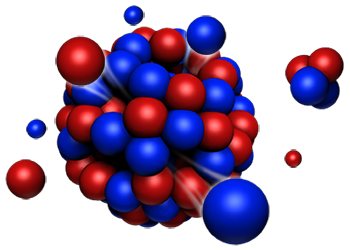Speaker
Description
In this decade, high-intensity spallation neutron sources combined with the Time-of-flight (TOF) method such as SNS, J-PARC and CNCS are available, and ESS will be available in the future. Using such the neutron source, neutron powder diffraction data are collected with higher statistics and/or resolution than conventional reactor sources. After the data reduction is done correctly to change the XY data, Rietveld method is available to refine the crystal and magnetic structures. While we can use high quality TOF data, the peak shape of the profile is more complicated than the data of reactor source because of the energy distribution of the incident beam, the geometry of the spectrometer and the time focusing of the data. In addition, the TOF range of single detector bank is limited, so that the data of multi-detector banks must be included to Rietveld refinement for accuracy.
Z-Rietveld program, produced by KEK powder group, is mainly developed for the data collected at J-PARC. We can easy to perform multi-phase, multi-profile Rietveld analysis. Compared to other Rietveld software, Z-Rietveld provide the high convergence because of calculation method. Another advantage of Z-Rietveld is to perform the continuous refinement of Pawley and Rietveld method, which is useful for unknown structure and multi-phase analysis. Z-Rietveld does not only support other TOF data but also both neutron and X-ray angle dispersive data. The aim of Z-Code project is to provide the data analysis tools to many kind of users with the latest application feeling to many kind of users.
The main progress of Z-Rietveld in the past of three years are the refinement of magnetic structure represented by propagation vector (from ver1.0.0), and both Fourier and maximum entropy method (MEM) (from ver. 1.1.0). We can perform continuous refinement of Rietveld method and MEM. Improvement of these function is still in progress. We also have plans to provide automatic analysis, the direct-derivation (DD) method and some useful functions. In this presentation, we show some example of magnetic structure analysis and MEM analysis and roadmap of Z-Code project.

